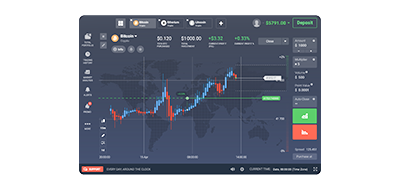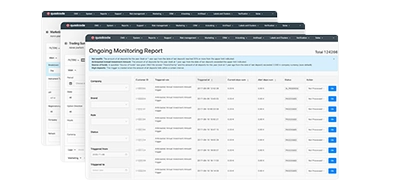Voltar
Contents
O que é ordem de mercado?

Demetris Makrides
Senior Business Development Manager

Iva Kalatozishvili
Business Development Manager
Em essência, uma ordem de mercado é uma ordem de negociação simples que instrui a corretora ou bolsa a comprar ou vender um ativo o mais rápido possível ao melhor preço atual. As ordens de mercado são executadas de forma rápida e fácil, o que é compreendido e valorizado pelos traders. No entanto, elas não fornecem controle sobre o preço exato pelo qual a negociação é concluída.
Como funciona a ordem de mercado
Ao optar por executar uma ordem de mercado, ela é executada em tempo real, no preço de mercado atual, sem qualquer atraso ou hesitação. Em mercados voláteis ou imprevisíveis, onde as ordens de mercado valorizam mais a velocidade do que a precisão do preço, o preço final da execução pode oscilar.
Executar uma ordem de mercado incluiria, por exemplo, comprar ações de uma empresa pelo preço mais alto possível. No entanto, se você optar por vender suas ações, uma ordem de mercado levaria em consideração o preço máximo que outro comprador está disposto a pagar naquele momento e venderia suas ações a esse preço.
Em mercados com liquidez e com vários compradores e vendedores presentes simultaneamente, normalmente o resultado é o preenchimento de uma ordem de mercado próximo ao último preço em que uma negociação ocorreu anteriormente. O preço de execução da sua ordem pode variar significativamente em relação ao preço exibido quando você a coloca em mercados com liquidez. Essa variação é chamada de "slippage" e pode ocasionalmente resultar em resultados de negociação, especialmente quando as condições de mercado são voláteis.
Quando usar uma ordem de mercado
Ordens de mercado funcionam bem quando seu objetivo principal é fazer uma negociação sem se preocupar com o preço exato envolvido na transação. Essa abordagem é especialmente útil nas situações descritas abaixo.
Se você precisar abrir ou fechar uma posição ou quiser entrar imediatamente em uma posição – talvez devido a mudanças repentinas no mercado ou notícias de última hora – usar uma ordem de mercado garante que sua negociação seja realizada prontamente e que você entre ou saia do mercado imediatamente. Este talvez seja o maior benefício de uma ordem de mercado. Em um cenário em que uma ação está se valorizando rapidamente devido à divulgação de um bom relatório de lucros, uma ordem de mercado garante que você possa comprar a ação e se beneficiar da tendência de alta antes que os preços subam ainda mais.
Preocupações e receios com oportunidades de negociação perdidas podem ser aliviados optando por uma ordem a mercado em vez de uma ordem limitada; isso essencialmente garante a participação imediata no mercado. Em situações em que os preços se movem de forma rápida e imprevisível, as ordens limitadas podem não ser executadas se o mercado não atingir o nível de preço especificado. Como resultado, as ordens limitadas podem fazer com que você perca oportunidades de negociação. Ao abrir uma ordem a mercado, você pode evitar esse risco, pois a negociação será realizada desde que haja liquidez suficiente e compradores ou vendedores presentes.
Em mercados muito líquidos, como os principais mercados de ações ou Forex, onde o volume de negociação é alto e os spreads entre compra e venda são estreitos, as ordens de mercado provavelmente serão executadas muito próximas ao preço de mercado atual, indicando pouca diferença entre o que um comprador está disposto a pagar e o que um vendedor espera em troca, o que frequentemente leva à execução de ordens de mercado a preços muito semelhantes ao último preço negociado, reduzindo assim quaisquer potenciais efeitos de slippage. As ordens de mercado são consideradas a melhor opção para os traders que buscam entrar ou sair de posições rapidamente e não se preocupam com a possibilidade de slippage.
Desvantagens do uso de ordens de mercado
O uso de ordens de mercado para negociação proporciona execução rápida e segura, mas também apresenta desvantagens em mercados imprevisíveis ou menos ativos. A falta de flexibilidade na definição de preços é uma grande desvantagem. Não há garantias sobre o preço exato que você obterá ao abrir uma ordem de mercado; em vez disso, você se compromete a negociar ao preço de mercado atual. Essa estratégia pode levar a deslizamentos significativos e consequências imprevistas em mercados onde os preços podem mudar rapidamente em minutos.
Se você decidir comprar uma ação na taxa de mercado quando seu preço estiver aumentando rapidamente e o pedido levar algum tempo para ser processado antes de ser atendido, você poderá ter que pagar um valor maior do que o esperado inicialmente devido ao aumento contínuo do preço durante esse período.
Outra desvantagem do uso de ordens de mercado é a possibilidade de preenchimento parcial de ordens em mercados com níveis de liquidez limitados. Em situações em que não há compradores ou vendedores suficientes disponíveis no preço atual para atender a sua ordem inteira, ela pode ser processada em segmentos, com cada segmento possivelmente sendo concluído a um preço diferente. Essa execução fragmentada pode levar ao aumento dos custos de negociação e representar desafios para atingir a meta de preço médio pretendida. Quando você decide vender uma quantidade de ações de uma ação em um mercado com baixa atividade de negociação usando uma ordem de mercado, algumas de suas ações podem ser vendidas ao preço de oferta atual, enquanto as restantes podem ser vendidas a preços decrescentes à medida que você fica sem compradores interessados no mercado.
Além disso, a execução de ordens de mercado pode apresentar dificuldades, especialmente ao lidar com transações de grande porte ou em momentos de volatilidade do mercado, quando as condições são incertas. Em um ambiente de mercado acelerado, o preço final pelo qual a operação é executada pode divergir significativamente da sua expectativa inicial, representando um desafio para o planejamento estratégico da operação. Essa imprevisibilidade pode ser problemática para traders que dependem fortemente de pontos de entrada e saída específicos para mitigar seus riscos de forma eficaz e atingir seus objetivos de lucro. Portanto, embora as ordens de mercado ofereçam a vantagem de execução imediata e garantida, elas exigem uma avaliação cuidadosa dos perigos potenciais, especialmente em relação a flutuações de preços e execuções incompletas.
Estratégias eficazes para usar ordens de mercado
Ao decidir usar ordens de mercado em suas negociações, é importante considerar alguns aspectos práticos para garantir que funcionem de forma eficaz. Primeiramente, avaliar as condições de mercado é crucial antes de abrir uma ordem de mercado. Ao compreender a volatilidade e a liquidez do mercado, você pode estimar a probabilidade de slippage de preço. Decida se uma ordem de mercado se encaixa no seu plano de negociação. A possibilidade de slippage, ou a possibilidade de sua ordem ser executada a um preço muito diferente do que você esperava, é maior em mercados muito voláteis, onde os preços flutuam rapidamente. Considere se outro tipo de ordem lhe daria mais controle sobre o preço de execução, em vez de uma ordem de mercado, nessa situação.
Ao negociar com ordens de mercado, para melhor lidar com os riscos, é benéfico usá-las em conjunto com ordens de stop loss. Uma ordem de stop loss aciona a venda dos seus ativos quando o mercado oscila desfavoravelmente acima de um nível definido por você, restringindo assim potenciais perdas. Ao usar uma ordem de mercado em conjunto com um stop loss, você pode garantir a execução da sua operação e também protegê-la de oscilações negativas significativas de preço.
Conclusão
Uma ordem de mercado é um instrumento fundamental de negociação que proporciona execução rápida e confiável, tornando-a perfeita para traders que precisam agir rapidamente no mercado. Embora não tenha o controle de preço que as ordens limitadas oferecem, sua simplicidade e eficiência a tornam uma opção preferencial em muitos cenários de negociação. A habilidade reside em saber o momento e o método certos para aplicar ordens de mercado de forma eficaz, permitindo que os traders capitalizem as oscilações do mercado com a garantia de que suas negociações serão concluídas rapidamente.
Atualizado:
19 de dezembro de 2024




